
В 2024 году количество пассажиров в мире достигло рекордного уровня, что оказало давление на аэропорты, чтобы они обслуживали растущее число пассажиров и размещали более крупные самолеты для их перевозки. Без достаточно длинных взлетно-посадочных полос аэропорты не могут принять крупнейший в мире пассажирский или грузовой самолет или даже космические челноки, когда им хочется зайти в гости.
Есть много аэропортов с взлетно-посадочными полосами, достаточно длинными для практически любого самолета, и не все из них находятся в местах, которые могут ожидать энтузиасты. Некоторые из них имеют многолетнюю историю, в то время как другие были построены на заказ в соответствии с потребностями современной авиационной промышленности. Эти 10 взлетно-посадочных полос являются одними из самых длинных в мире, с длиной, намного превышающей большинство аэропортов - в центре внимания самых интересных ультрадлинных взлетно-посадочных полос со всего мира.
10. Международный аэропорт Аль-Мактум, ОАЭ (DWC) - 14 763 фута
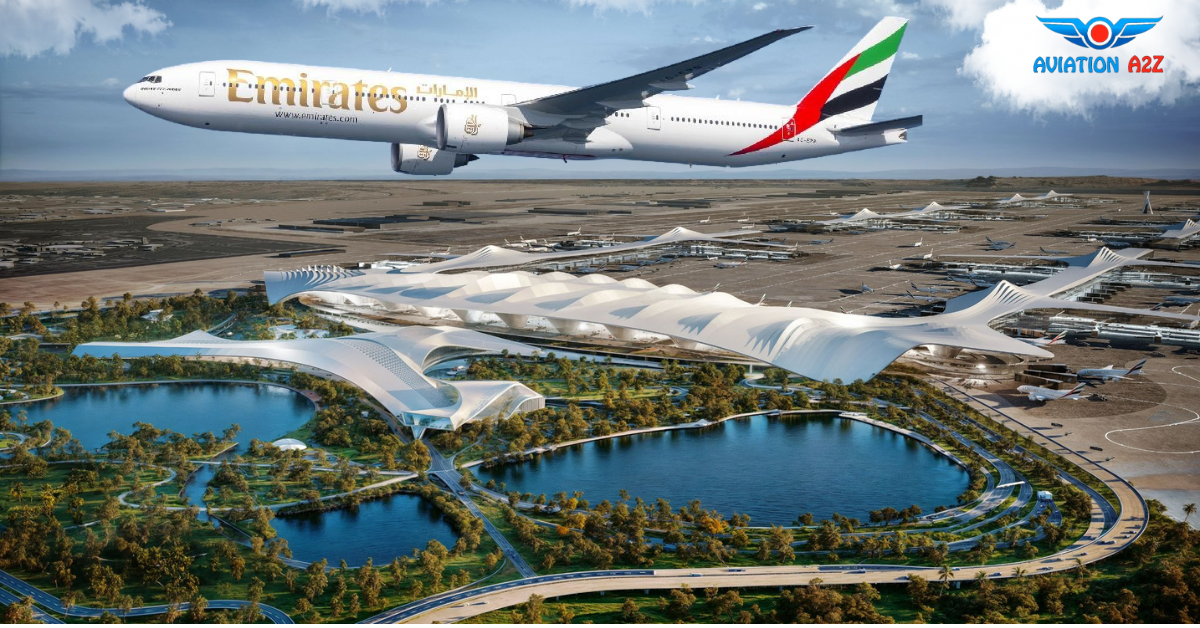 Аэропорт Эмирейтс Аль Мактум; фото: Обсуждение Aviation A2Z
Аэропорт Эмирейтс Аль Мактум; фото: Обсуждение Aviation A2ZВ начале 2024 года руководство международного аэропорта Аль-Мактум (DWC) объявило о амбициозных планах превратить его в крупнейший в мире аэропорт пропускной способности.
После завершения модернизации аэропорт должен обслуживать до 260 миллионов пассажиров в год. Чтобы достичь этой мощности, аэропорт должен вмещать все виды пассажирских самолетов в современном небе, а также следующее поколение сверхразмерных самолетов. 14 763-футовая взлетно-посадочная полоса имеет решающее значение для достижения этих целей.
Грузовые рейсы начались в 2010 году, но пассажирские рейсы начались только в 2013 году. Несмотря на то, что он относительно молод по мировым стандартам, он быстро расширяется. Если запланированный план будет выполнен, аэропорт превзойдет международный аэропорт Дубая (DXB), в настоящее время один из самых загруженных в мире, с 87 миллионами пассажиров в 2023 году.
Стратегическая длина взлетно-посадочной полосы обеспечивает совместимость с нынешними и будущими поколениями самолетов, позиционируя Аль Мактум как крупный глобальный авиационный узел.
9. Международный аэропорт Windhoek Hosea Kutako, Намибия (WDH) - 14 869 футов
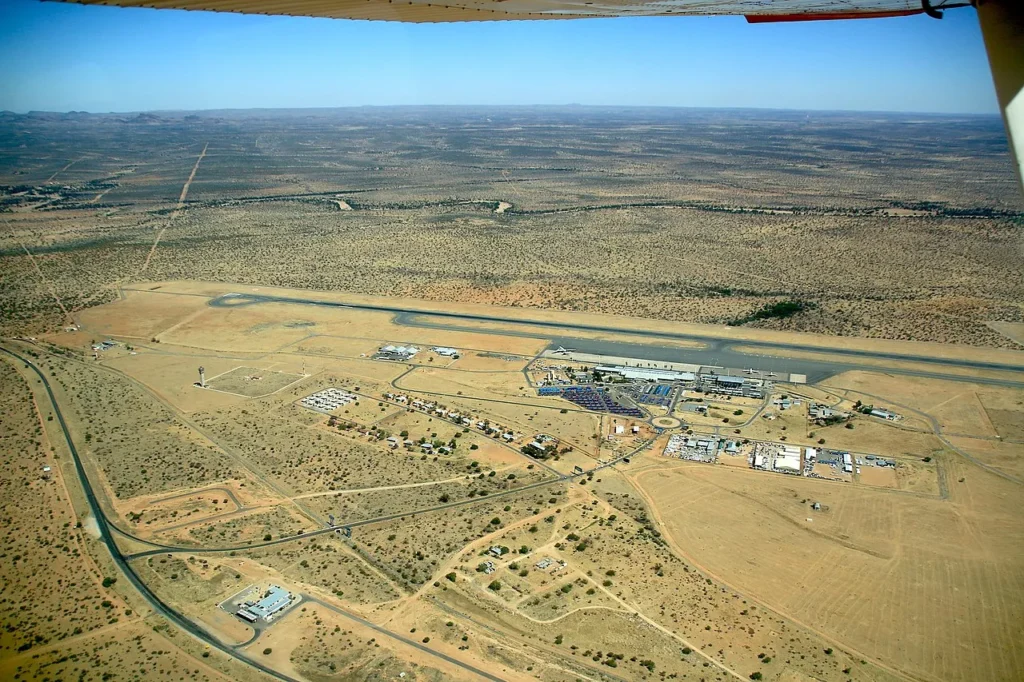 Международный аэропорт Виндхук Осия Кутако, Намибия; Фото Википедия
Международный аэропорт Виндхук Осия Кутако, Намибия; Фото ВикипедияС длиной 14 869 футов, Международный аэропорт Windhoek Hosea Kutako (WDH) Есть еще одна сверхдлинная взлетно-посадочная полоса на юге Африки.
Аэропорт служит флагманским объектом Намибии, обслуживая межконтинентальные и более короткие рейсы, включая маршруты в Европу и на Ближний Восток. Аэропорт и Виндхук находятся на высоте более 5000 футов над уровнем моря, что требует дополнительной взлетно-посадочной полосы для размещения различных типов самолетов в высотных, теплых климатических условиях. В аэропорту также есть вторичная взлетно-посадочная полоса высотой 5003 фута - примерно одна треть длины главной взлетно-посадочной полосы.
8. Аэропорт Нджили, Демократическая Республика Конго (FIH) - 15 420 футов
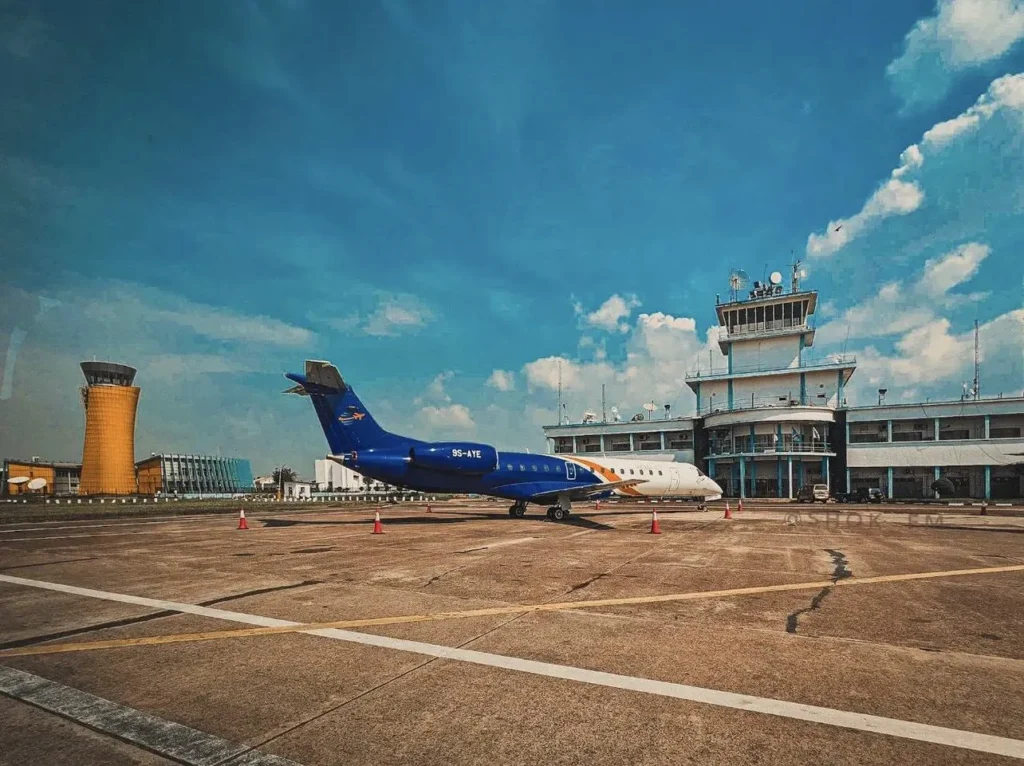 Аэропорт Нджили, Демократическая Республика Конго; Фото Википедия
Аэропорт Нджили, Демократическая Республика Конго; Фото ВикипедияРасположенный недалеко от Киншасы, столицы Демократической Республики Конго, аэропорт Нджили (FIH) открылся в 1953 году с Sabena, тогдашним национальным перевозчиком Бельгии, в качестве первого оператора.
Сегодня аэропорт принимает многочисленные международные авиакомпании и служит частой остановкой для грузовых перевозчиков. Взлетно-посадочная полоса длиной 15 420 футов особенно полезна для грузовых операций, поскольку авиакомпании часто используют более старые, более крупные самолеты, такие как Boeing 747.
ДРК является региональным центром авиаперевозок с четырьмя международными аэропортами, а Нджили является крупнейшим, особенно после того, как в 2015 году был добавлен новый пассажирский терминал. Это расширение отражает быстро растущее население Киншасы, которое достигло примерно 17 миллионов человек в 2024 году.
7. Международный аэропорт Роберта Габриэля Мугабе, Зимбабве (HRE) - 15 502 фута
 Международный аэропорт имени Роберта Габриэля Мугабе, Зимбабве; Фото-Аэропортовая компания Зимбабве (ACZ)
Международный аэропорт имени Роберта Габриэля Мугабе, Зимбабве; Фото-Аэропортовая компания Зимбабве (ACZ)При заявленной стоимости в 153 миллиона долларов, Международный аэропорт Роберта Габриэля Мугабе (HRE) Недавно были проведены крупные обновления с увеличенной пропускной способностью терминала и новыми функциями, включая электронные ворота. Взлетно-посадочная полоса аэропорта длиной 15 502 фута, одна из самых длинных в Африке, оставалась неизменной во время последнего расширения.
Аэропорт когда-то был одним из самых загруженных в Южной Африке, но его влияние уменьшилось при правлении Мугабе. Последний капитальный ремонт направлен на восстановление привлекательности как для авиакомпаний, так и для международных путешественников, с годовой пропускной способностью, достигающей 6 миллионов пассажиров.
Будет ли он восстанавливать свой статус хаба, еще предстоит выяснить, но теперь он обладает необходимой пропускной способностью с точки зрения как количества пассажиров, так и длины взлетно-посадочной полосы для крупных международных операций.
6. Международный аэропорт Эрбиль, Ирак (EBL) - 15 748 футов
 Международный аэропорт Эрбиль (Facebook)
Международный аэропорт Эрбиль (Facebook)Первоначально построенный в 2003 году и расширенный в 2011 году, Иракский международный аэропорт Эрбиль (EBL) в основном служит международным центром для коммерческих рейсов в Европу и другие части Азии. Она также поддерживала военные операции, особенно иракские и западные силы во время конфликтов против ИГИЛ.
Взлетно-посадочная полоса измеряет 15 748 футов, обеспечивая комфортную работу различных военных и гражданских самолетов, несмотря на высокие летние температуры в регионе. Близость к городу Эрбиль, где проживает около 1,4 миллиона человек, сделала его популярным региональным туристическим центром.
В 2022 году прошло 1,8 миллиона пассажиров, что примерно на 600 000 больше, чем в предыдущем году, что свидетельствует о растущем спросе на услуги объекта.
5. Международный аэропорт Хамад, Катар (DOH) - 15 912 футов
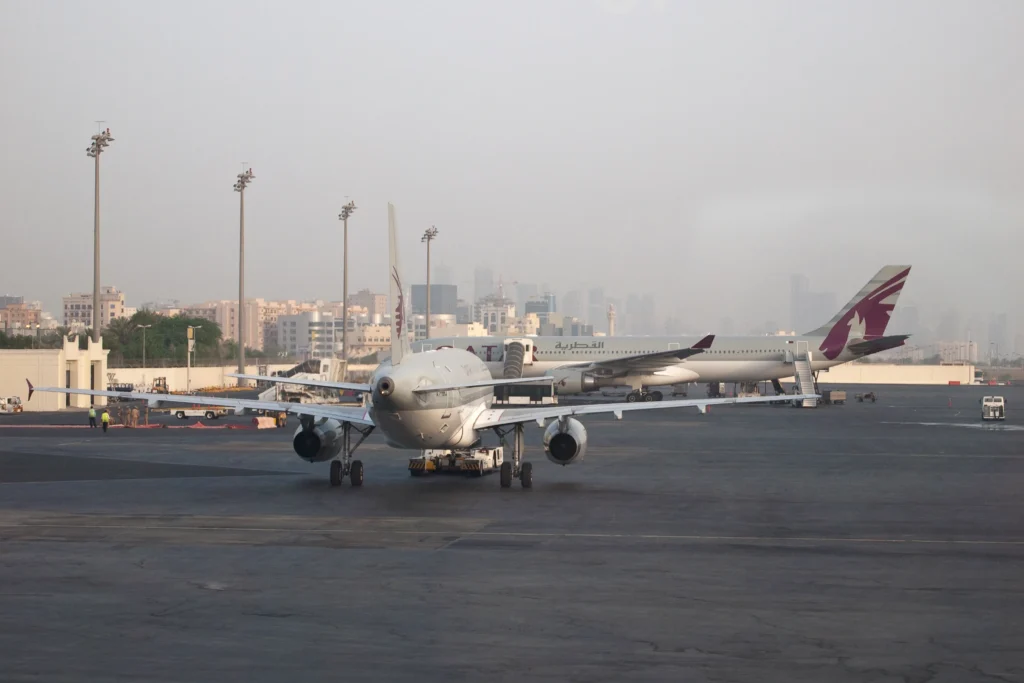 Международный аэропорт Хамад; Фото Википедия
Международный аэропорт Хамад; Фото ВикипедияБудучи одним из нескольких ближневосточных аэропортов, построенных для обслуживания основных межконтинентальных авиационных узлов, Международный аэропорт Хамад (DOH) в Катаре приветствовал свой первый запланированный рейс в 2014 году.
Продолжающаяся работа по расширению продолжает увеличивать пропускную способность аэропорта в рамках стратегии Катара по конкуренции с конкурирующими хабами, такими как Дубай и Абу-Даби.
Катарский аэропорт имеет две взлетно-посадочные полосы, первичная из которых составляет 15 912 футов, а вторичная достигает 13 944 футов.
Исключительная длина взлетно-посадочной полосы учитывает роль аэропорта как глобального хаба, учитывает высокие летние температуры и обеспечивает совместимость с крупнейшими в мире пассажирскими самолетами. Эта инфраструктура позиционирует Хамад Интернэшнл как главное направление для межконтинентальных путешествий и роскошных авиационных услуг.
4. Аэропорт Апингтон, Южная Африка (UTN) - 16 076 футов
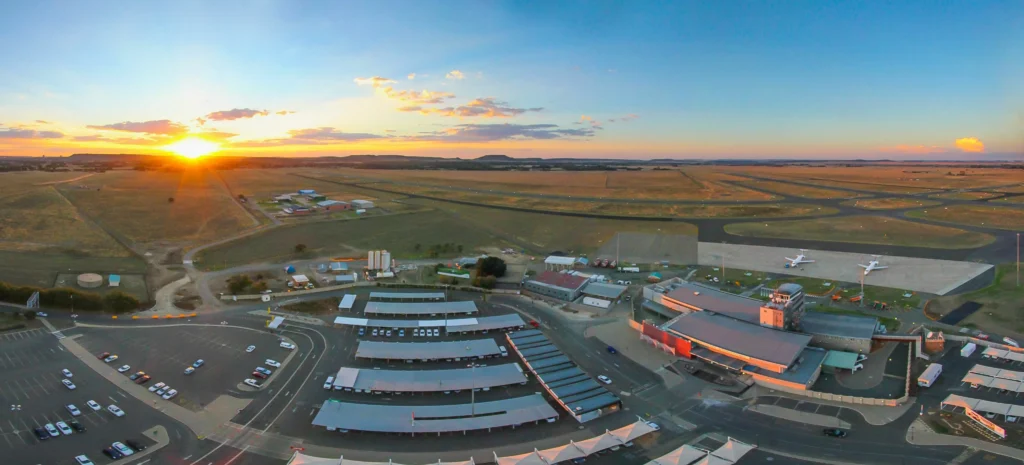 Аэропорт Апингтон (X)
Аэропорт Апингтон (X)В то время как взлетно-посадочная полоса аэропорта Апингтона не совсем соответствует испытательному центру Embraer в Бразилии, она достигает 16 076 футов, что является следствием большой высоты и жарких летних температур.
Взлетно-посадочная полоса была специально разработана для размещения Boeing 747, известного как «Королева небес» Первоначально он предназначался для заправки межконтинентальных рейсов 747, а не для крупного пассажирского узла.
В то время как большинство пассажирских авиакомпаний больше не эксплуатируют 747, аэропорт нашел новое назначение в качестве авиагрузового узла.
Согласно веб-сайту аэропорта, немецкие автопроизводители, в том числе BMW и Mercedes-Benz, используют Upington в качестве испытательного полигона для испытаний высотных транспортных средств, поддерживая постоянную активность с инженерным персоналом и транспортными средствами разработки в течение всего года.
3. Международный аэропорт Денвера, США (DEN) - 16 001 фут
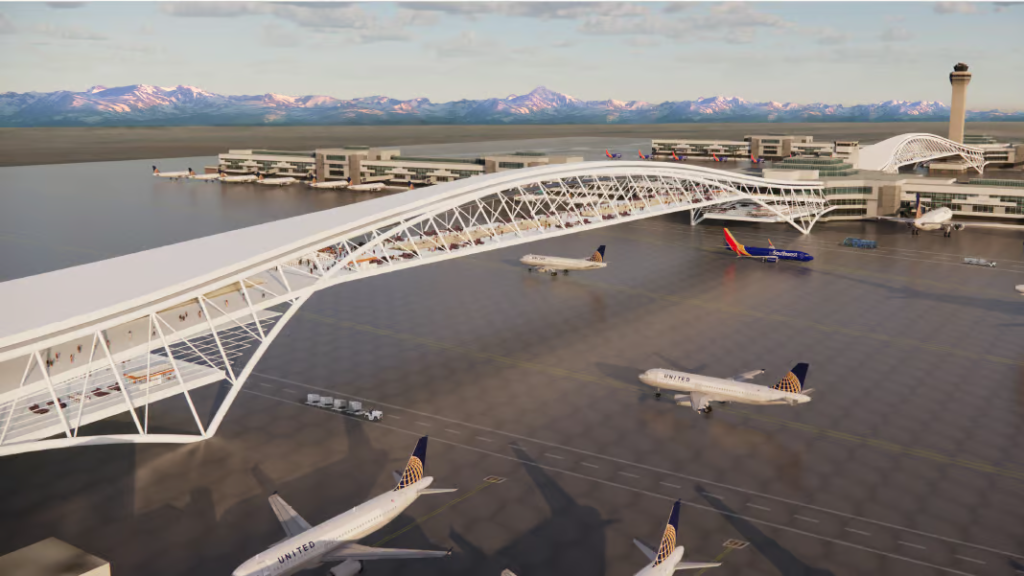 Фото: Международный аэропорт Денвера
Фото: Международный аэропорт ДенвераМеждународный аэропорт Денвера в Колорадо (DEN), расположенный на большой высоте с теплым летом, требует своей чрезвычайно длинной главной взлетно-посадочной полосы.
Это не только самая длинная взлетно-посадочная полоса общественного пользования в Соединенных Штатах, но и одна из самых длинных в мире - чуть более 16 000 футов.
Завершенный в 1995 году, аэропорт служит главным центром для деловых и путешественников Колорадо. Он вмещает широкий спектр внутренних и международных авиакомпаний, что требует больших самолетов, способных выполнять трансконтинентальные рейсы.
2. Аэропорт Embraer Unidade Gavião Peixoto, Бразилия - 16296 футов
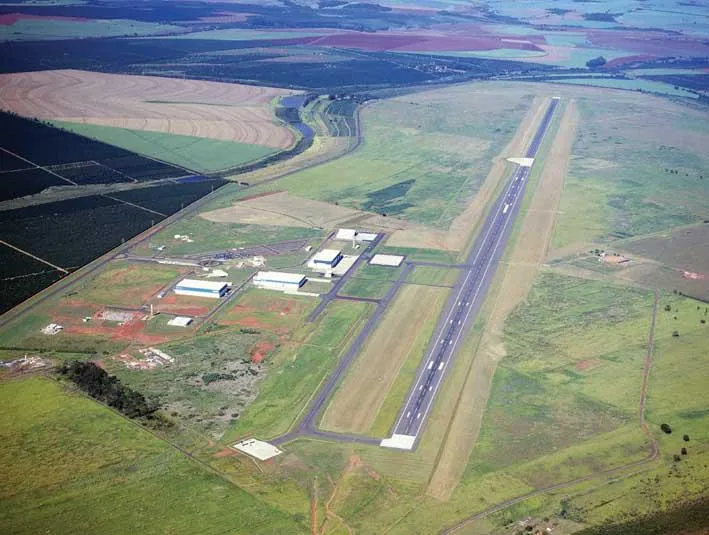 Embraer Unidade Gavião Peixoto Airport, Бразилия; фотоальбом
Embraer Unidade Gavião Peixoto Airport, Бразилия; фотоальбомПостроен авиастроительной компанией Аэропорт Embraer как база для разработки и строительства самолетов последнего поколения был завершен в 2001 году. Объекты Embraer стали важным источником занятости в регионе, и производитель сообщает, что более половины населения Гавиао Пейшото работает там.
Embraer производит как коммерческие, так и военные самолеты на базе, причем военные заказы в основном от ВВС Бразилии.
Решение о строительстве рядом с Гавиао Пейшото последовало после тщательного рассмотрения, и Embraer, как сообщается, оценил 300 различных объектов, прежде чем выбрать окончательное местоположение.
Естественно плоская местность и стратегическое расположение города сделали его оптимальным для исключительного испытательного и производственного объекта Embraer.
1. Аэропорт Ульяновск Восточный, Россия (ULY) - 16 404 фута
 Ульяновский аэропорт Восточный, Россия; Фото Саши Кротова | Wikimedia Commons
Ульяновский аэропорт Восточный, Россия; Фото Саши Кротова | Wikimedia CommonsИмея взлетно-посадочную полосу высотой 16 404 фута, аэропорт Ульяновск-Восточный в России в настоящее время обслуживает пассажирские рейсы, но первоначально был построен как часть массивного советского промышленного комплекса, предназначенного для проведения испытаний военных самолетов.
Сегодня он продолжает работать в качестве производственного центра для различных отраслей промышленности, включая авиацию.
Аэропорт сыграл решающую роль в разработке Ан-124 «Руслан», крупнейшего в мире производственного транспортного самолета. Единственным более крупным самолетом был Ан-225 «Антонов», уничтоженный во время вторжения России на Украину в феврале 2022 года.
Нижняя линия
Эти 10 аэропортов доказывают, что, когда авиационные инженеры настроены на это, они могут создавать взлетно-посадочные полосы достаточно долго, чтобы вместить все, от гигантских самолетов до космических челноков, и, вероятно, приличный марафон, если кто-то чувствует себя особенно амбициозным.
В то время как более короткие взлетно-посадочные полосы тестируют пилотов, эти удлиненные полосы асфальта предлагают роскошь пространства, гарантируя, что даже самый массивный самолет может приземлиться с пространством, чтобы сэкономить на круге победы!
Оставайтесь с нами. Следуйте за нами в социальных сетях для последних обновлений.
Присоединяйтесь к нам в Telegram Group для последних обновлений авиации. Следуйте за нами в Google News
Топ-10 самых опасных Аэропорты мира No4 удивят вас
Топ-10 самых длинных взлетно-посадочных полос в мире впервые появился на Aviation A2Z.











![A gdyby tak rzucić wszystko i wyjechać do Maroka… [zdjęcia]](https://tarnow.ikc.pl/wp-content/uploads/2025/10/ucieczka-do-tangeru-fot.-Artur-Gawle0001.jpg)


